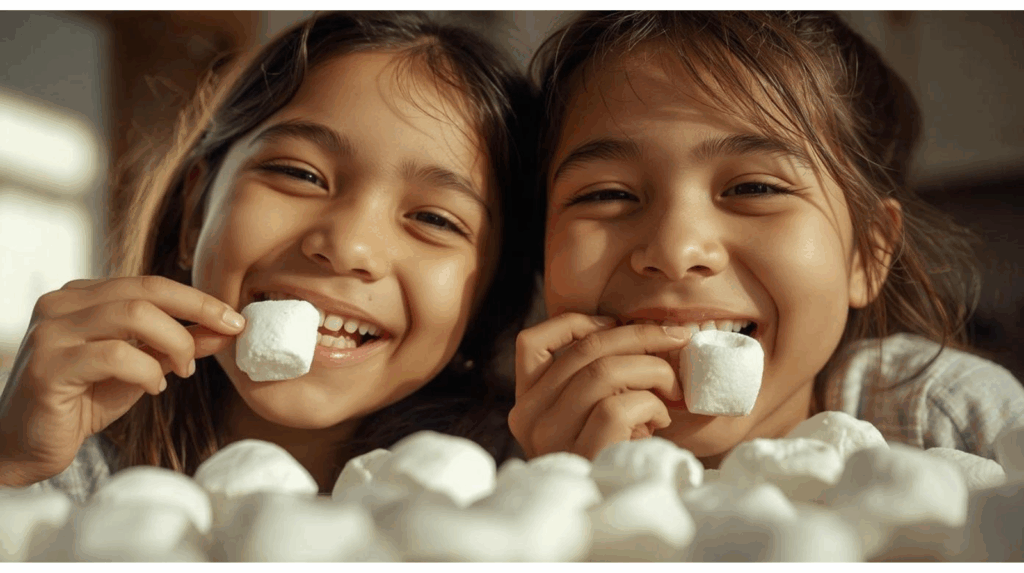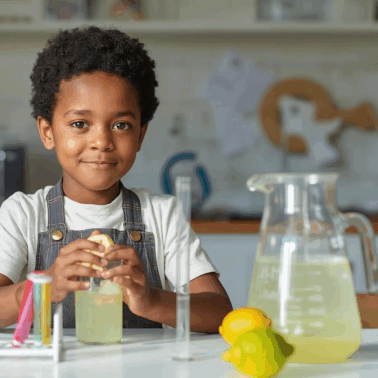At Playful Chef, we believe learning happens best when kids get to taste the science! In this colorful collection of edible experiments, you will mix, melt and rise your way through two magical kitchen reactions that double as delicious snacks.
These hands-on activities are perfect for ages 6–8, with simple instructions, everyday ingredients, and plenty of learning baked right in. Before you get started, download our Experiment Observation Worksheet for this blog post to make the most of your experience. Let’s cook up some science!
Kitchen Chemistry At-A-Glance
| Experiment | Age | Mess Level | Supervision | Allergy Watch |
|---|---|---|---|---|
| Marshmallow Puff-Up | 6-8 | Low | Low | Chocolate |
| Melty Cheese Magic | 6–8 | Medium | Moderate | Dairy |
| The Great Cake Rise | 6–8 | Medium–High | Full | Dairy, Eggs, Gluten |
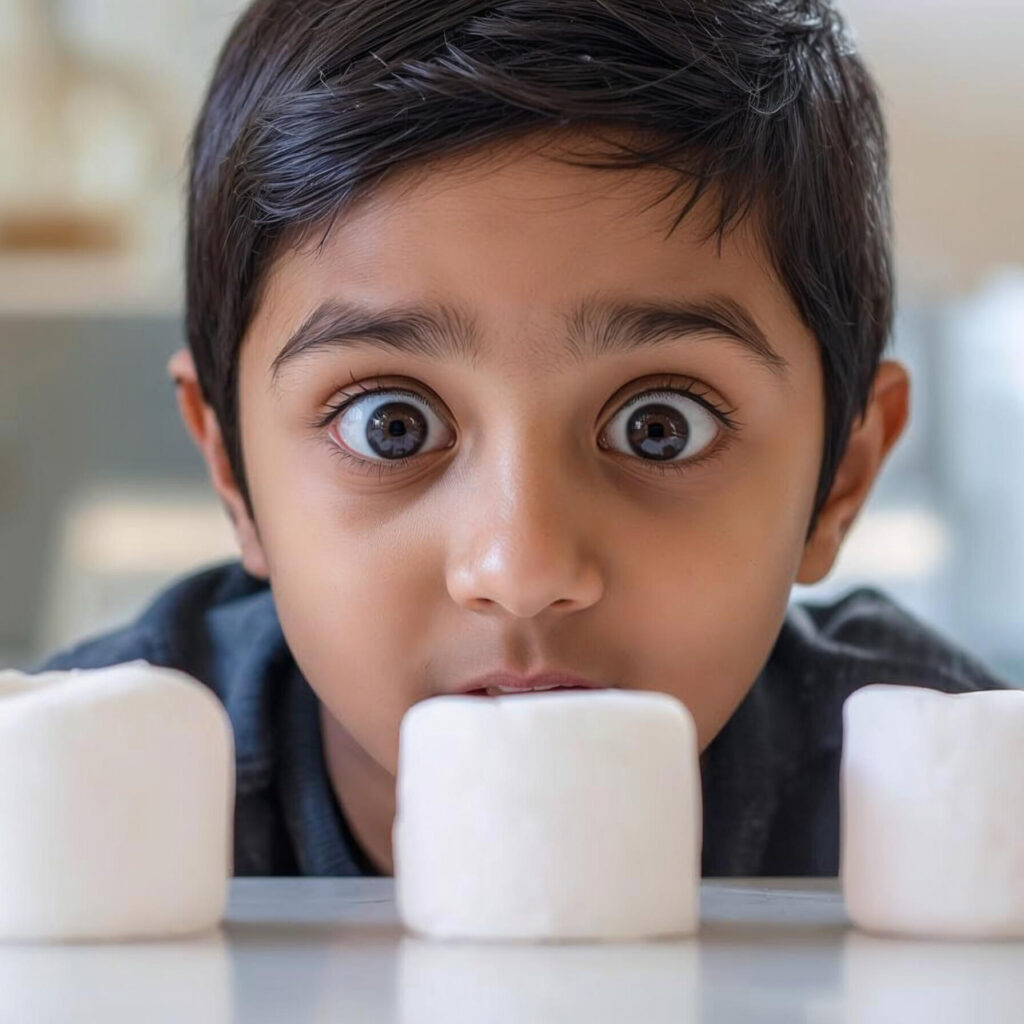
Marshmallow Puff-Up Ages 6-8
What You’ll Need:
- 3–4 regular-sized marshmallows
- Microwave-safe plate
- Timer or microwave with a visible countdown
- (Optional) small piece of chocolate or graham cracker for tasting after
How To:
- Place a few marshmallows on a microwave-safe plate.
- Ask your chef to make a prediction: “What do you think heat will do to the marshmallow?”
- Microwave for 10–15 seconds and watch carefully through the door — they’ll expand and puff up like balloons!
- Let them cool for a minute before touching or tasting.
Science Vocabulary
- Expand – When something gets larger because its particles move faster and spread out.
- Contract – When something gets smaller as it cools and particles move closer together.
- Air pressure – The push made by the air trapped inside the marshmallow.
- Physical change – When food changes in appearance or texture, but not in what it’s made of.
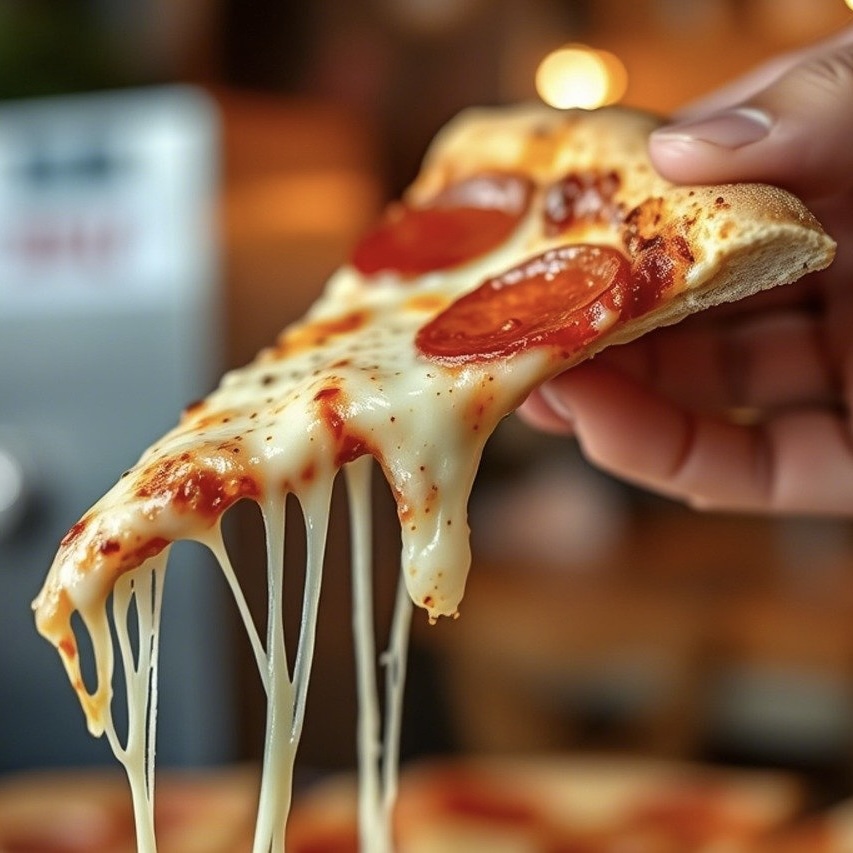
Melty Cheese Magic (Perfect Pita Pizza)
Ages 6–8
What You’ll Need:
How To:
- Assemble mini pizzas with the two different cheeses, mozzarrella and parmesan.
- Bake and observe both cheeses as they melt and stretch OR as they get brown and crunchy.
Science Vocabulary:
- Protein – Building blocks in food that change when heated.
- Fat – Melts at a lower temperature, making food creamy or gooey.
- Maillard Reaction – A tasty chemical change that happens when food browns.
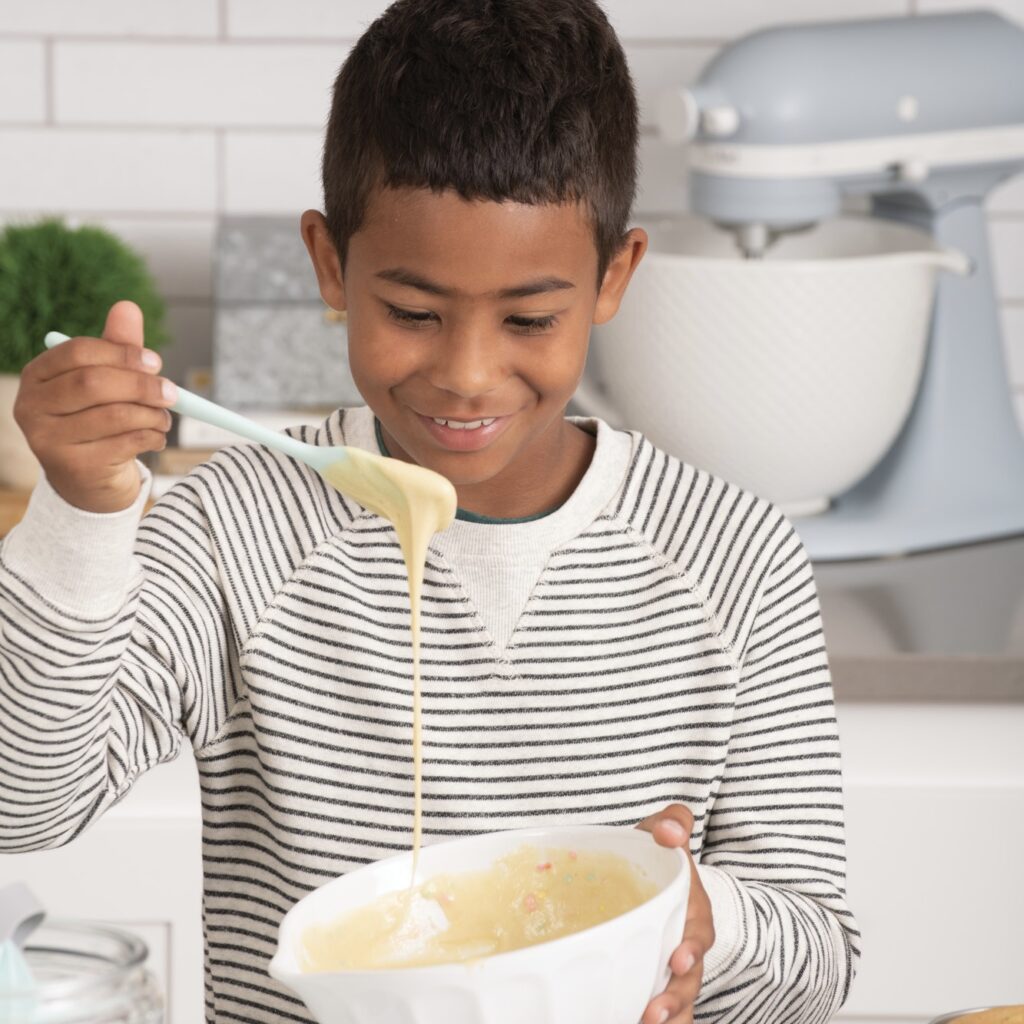
The Great Cake Rise (Perfect Vanilla Cake)
Ages 6–8
What You’ll Need:
- Playful Chef’s Perfect Vanilla Cake recipe
- Timer and oven light for observation
How To:
- Let kids stir the batter and observe the tiny bubbles.
- Then peek through the oven window every 5 minutes to watch it puff up!
Science Vocabulary:
- Leavening agent – A substance that helps baked goods rise (like baking powder).
- Carbon dioxide – A gas created during the reaction that makes your cake puff up.
- Structure setting – As the batter heats, it firms up and locks in the bubbles.
Bonus: Experiment Observation Worksheets
Turn your kitchen into a playful science lab! Grab this free printable for this blog post:
Wrap-Up: Eat, Experiment, Enjoy!
These edible experiments make it easy for kids to see how cooking and chemistry go hand in hand — and feel the pride of creating something delicious on their own. Add an apron, a timer, and lots of “oohs and aahs” for the full Playful Chef experience.
Want More?
Check out our full line of Playful Chef cooking kits that blend STEAM learning, real-life cooking skills, and playful storytelling. From cakes to chemistry, we’ve got your chef covered.
